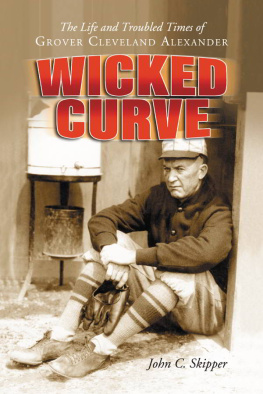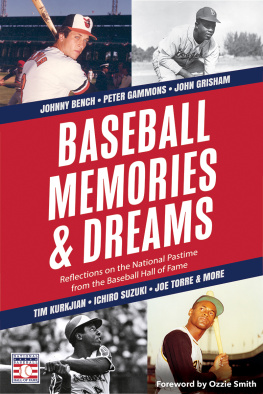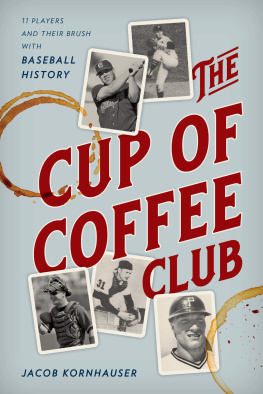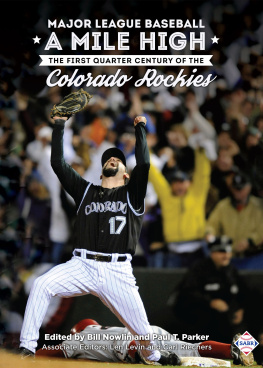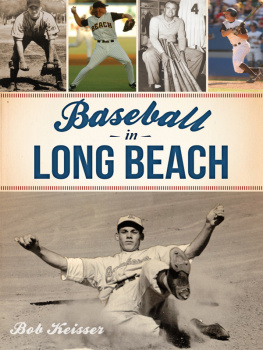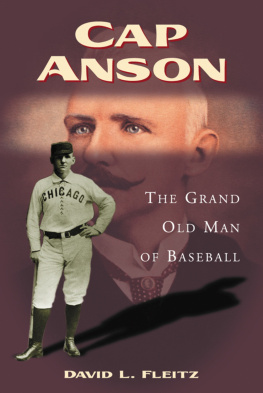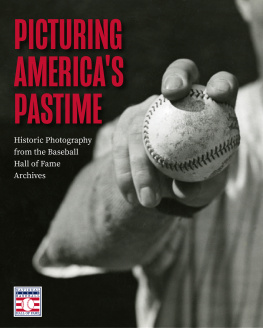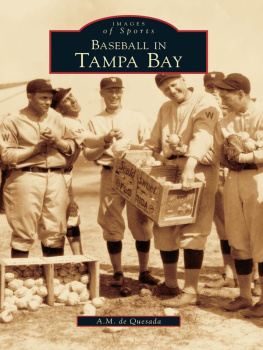
BILLY SOUTHWORTH
A Biography of the Hall of Fame Manager and Ballplayer
John C. Skipper

McFarland & Company, Inc., Publishers
Jefferson, North Carolina, and London
LIBRARY OF CONGRESS CATALOGUING DATA ARE AVAILABLE
BRITISH LIBRARY CATALOGUING DATA ARE AVAILABLE
e-ISBN: 978-1-4766-0210-3
2013 John C. Skipper. All rights reserved
No part of this book may be reproduced or transmitted in any form or by any means, electronic or mechanical, including photocopying or recording, or by any information storage and retrieval system, without permission in writing from the publisher.
On the cover: Illustration of Billy Southworth from the 1945 edition of The Baseball Register
McFarland & Company, Inc., Publishers
Box 611, Jefferson, North Carolina 28640
www.mcfarlandpub.com
For Carole Southworth Watson
Preface
One of my earliest recollections of connecting with baseball is my oldest brother, 11 years older than me, showing me how he could pick up St. Louis Cardinals baseball games on the radio. This was no easy trick for we lived in Oak Park, Illinois, solid Cubs and White Sox country, and this was in the 1950s.
I was about nine years old and just beginning to get in the habit of hearing Jack Brickhouse broadcast Cubs and White Sox games on WGN-TV in Chicago. In those days, WGN didnt televise road games but aired every home game of both teams.
My brother, who was in college, was an avid Cardinals fan. He owned a black 1941 Ford. At night, in the summertime, we would go out to the garage at the back our house, he would turn on the ignition of the 41 Ford and then turn on the radio. Very carefully, like he was panning for gold, my brother would move the round dial that allowed him to go from one radio station to another. There wasnt much space on the dial between the big Chicago stations of WCFL, WLS, WBBM, WGN, WIND and so many others.
But on many nights, if the air was clear and the stars were aligned just right, my brother could nd KMOX in St. Louis where Harry Caray was doing the play-by-play of the Cardinals games.
My brother told me Harry Caray was the only announcer in the world who could get you excited over ball two. He also could cause your anticipation to skyrocket by simply telling you who was on deck, as in Holy cowMusial will be next!
On July 3, 1954, my family went to the CubsCardinals game at Wrigley Field and on that day, my brother dived into a crowd of spectators and came up with a treasure that remains in my home today, nearly 60 years later. It is a foul ball hit by Cardinals third baseman Ray Jablonski. I thought it was a pretty big deal that he got it and an even bigger deal when he gave it to me to keep. I dont have to go to retrosheet.com to nd out who won the game. The Cubs won, 41. My brother had neatly printed Ray Jablonskis name and the score of the game on the ball.
I grew up appreciating the nuances of baseball, the facts and gures of the game, and the names in front of those statistics. To this day, I might have trouble reciting the names of the members of the presidents cabinet but I can attest without fear of contradiction that Hank Sauer hit 41 home runs for the Cubs in 1954.
As an adult, I became a professional writer, not a sportswriter per se, but someone who enjoyed baseball, enjoyed research and enjoyed the challenge of turning both of them into a really good story. In researching my book The Cubs Win the Pennant, I was reminded that Billy Southworth won three straight National League championships with the St. Louis Cardinals from 1942 through 1944 and that his Cardinals team nished second in 1945the last year the Cubs won the National League championship.
One of the facts that stuck in mind is that Southworths son, Billy Southworth, Jr., was killed in a plane crash in Flushing Bay, New York, just before the 1945 season started and that his body was not recovered until August. His father, managing a team while grieving the loss of a son, had to leave his team and go to New York to identify his remains.
I have always been struck by the fact that all of us, no matter what our profession is, have lives outside the ofce and many times events outside the public eye have a profound effect on what the public sees, whether the public is aware of it or not. It is for that reason, more than anything else, that I wanted to dig deeper than statistics and learn more about the life of Billy Southworth. The rst full year of his terric reign as manager of the Cardinals was 1941, the same year the old black Ford was manufactured that provided those radio accounts of the Cardinals in our garage in Oak Park.
Three of Ray Jablonskis teammates on that 1954 Cardinals team were Musial, Red Schoendienst and Al Brazle, three men who played for Southworth more than a decade earlier. By 1954, Southworths managing days were over. The Cardinals manager was Eddie Stanky, who was an inelder on one of Billys Boston Braves teams late in the waning days of his managerial career.
I set out to try to connect the dots in the life of Billy Southworth and discovered, as is so often the case, that the dots do not connect on their own. Rather, it is only when one can look back at the events of an entire life that it becomes apparent how one dot connects with another.
What is conveyed in the following pages is the remarkable life of Billy the Kid, his triumphs, his tragedies, his rise, his fall, the motivations that drove him, the demons that followed him.
I am indebted to the National Baseball Hall of Fame in Cooperstown, New York, and the Boston Braves Historical Association for the resources that provided the data so necessary in a book such as this.
Any researcher has to have the raw materials to work with, and in this case, I reveled in the splendid writings of some of the great sportswriters of the 20th centuryGrantland Rice, Red Smith, Bill Corum, Joe Williams, Tommy Holmes, Dan Daniel, Bob Considine and so many others whose words brought meaning and understanding and perspective to Billy Southworth.
Great thanks also to the late Bill Voiselle, the Boston Braves pitcher who won 13 games in the year of Spahn and Sain and was an integral part of the Braves championship season. The author interviewed Voiselle 20 years ago in connection with another book project (Inside Pitch: A Closer Look at Classic Baseball Moments). Neither he nor I could have envisioned at the time how valuable his insights would be to this book.
Similarly, several years ago, I interviewed Elayne Savage, a California psychologist and therapist, for an article for The Globe Gazette, the daily newspaper in Mason City, Iowa, my hometown. The subject matter had nothing to do with baseball. Rather, its focus was on how people react to tragedies in their lives. The insights she had about her own personal experience turned out to be remarkably similar to Southworths encounters with tragedy.
A special thanks to Ray Mileur, curator of The Birdhouse website and super fan of the St. Louis Cardinals, who, was especially helpful in connecting some dots regarding Southworths election to the Hall of Fame and details about the induction ceremonies.
Bob Brady of the Boston Braves Historical Association provided specic help and guidance which is much appreciated.
My friend and colleague Arian Schuessler provided his usual technical and personal support to help make this project succeed.
Next page

